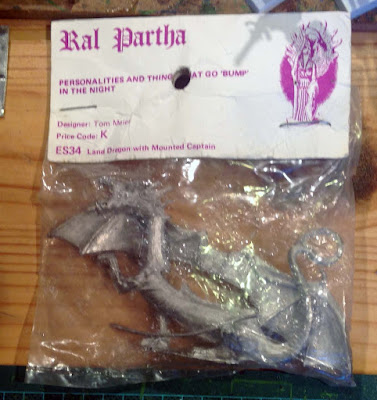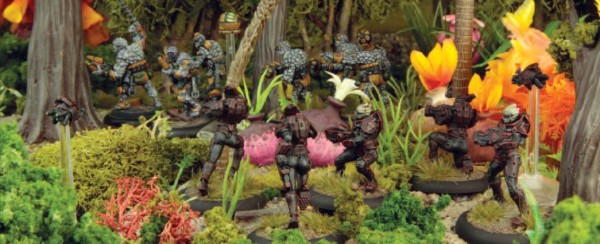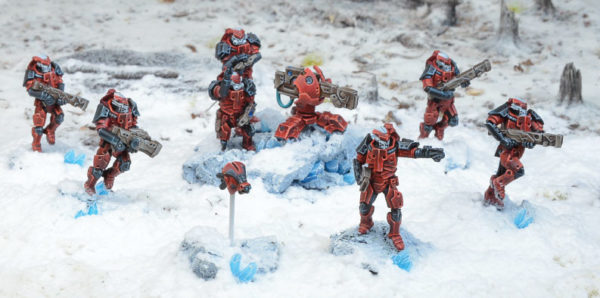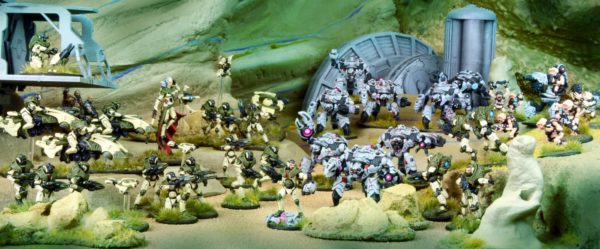One of the key mechanics in our rules are the command rolls. During a turn, a player has to activate units one by one, by rolling vs the command rating of a commander. This system is the same as is used in e.g. Black Powder. Modifiers exist for unit distance from the commander, the further away a unit is, the difficult it is to successfully activate the unit. Once all commanders have failed a roll, the turn switches to the other player.
Such a system works ok, but has a number of drawbacks. E.g. units tend to become clustered around commander figures, which limits scenarios in which troops are far apart. Thus we introduced a rule that once per turn, you could order a unit outside any command range. That works as well, but still feels a bit clunky.
One aspect that I would like to introduce is to have commanders which are better in some situations, e.g. movement, or attack. Currently, our orders for which a command roll is necessary include movement, fire, and charge, without any distinction in the success rate. It would be nice to have commanders that e.g. give a bonus on movement. Recently, I played a few games of Lion Rampant, in which each unit is activated on an activation roll, based on the type of order. No commanders are needed (each unit can activate by itself), but it loses the flavour of having commanders as the central focal point, which might be more suitable some periods.
One solution would be to simply give commanders a bonus for a specific type of order. But then I feel our current system, based on distance to a commander, becomes a bit too complicated. I am a big fan of nice coherent rules without too much clutter and exceptions. I already feel our rule that one unit can be given an order, irrespective of distance, is stretching it. Some might say there is no problem, since you only have 2 or 3 modifiers to the die roll. But the problem is that our current rules require a commander to give the order, and once he fails, the next commander is activated (as in Black Powder). This sometimes created confusion in games. Players used commanders at will (also because we use no fixed OOB), and sometimes could not remember which commander already had failed his command rolls etc. This are minor issues compared to more complicated rulesets, but such little mishaps need to be ironed out. I am a strong proponent of the idea that rules should do what players feel is natural, rather than force players in a logical or mathematical harness that feels counterintuitive.
Anyway, a lot of conflicting thoughts and design issues, and since I firmly believe rules should be streamlined as well as possible, I came up with the following design for our command rolls:
- A unit can always activate on the roll of a 8+ (2D6), irrespective of distance to a commander.
- Once an activation is failed, turn switches to the other player.
- If a commander is present within 4 hexes, the unit could receive a bonus on the activation roll. This bonus is commander-specific, and can be a +0, +1, or +2. E.g. a commander could grant a bonus of +1 for movement orders only, or a +2 for a charge order, etc.
- That's it!
It might feel a bit strange that commanders do not have negative modifiers to express their charcater, but that would not fit into the rules. After all, this would require that units must use a commander for initiating an order, which is something I wanted to get rid of. Thus, commanders provide bonuses, and it is up to the player to decide whether he wants to use the bonus and how.
In our ACW games so far, I used the rule of thumb that an army should have 1 commander per 4 units. That still seems ok. However, I would now make players draw a random card for each of their commanders, specifying the characteristics. It is then up to the player to make a plan based on the abilities of his commanders, and where he wants to use them on the table. Alternatively, once could use some dice to roll out characteristics, but then these need to be written down anyway.
Perhaps I can re-use some of my cards from the Dixie:Bull Run Columbia game that was published several years ago (and from which I did borrow cards int he past when our activation for ACW games was still card driven). Slide the cards into card protectors, and attach a little post-it. Once everything has been playtested, the cards can be nicefied.








